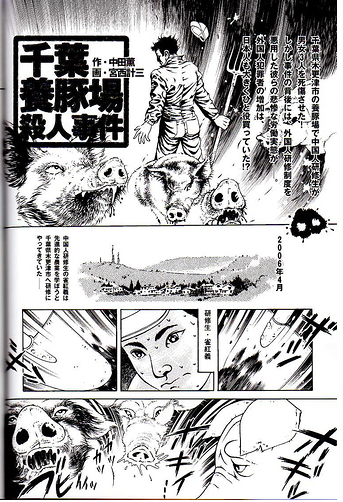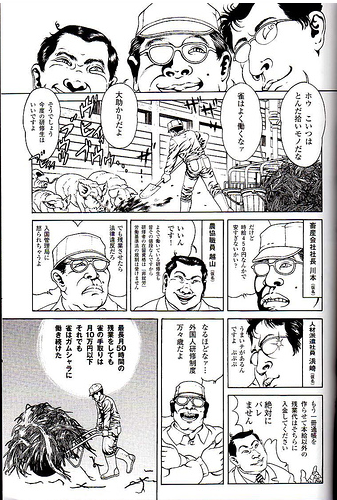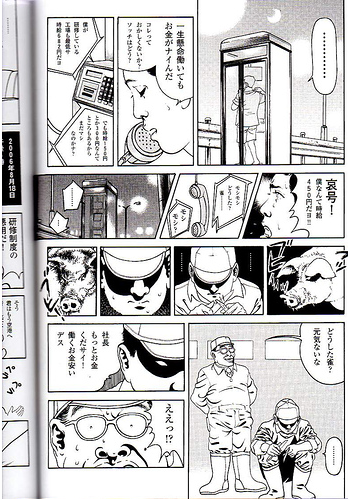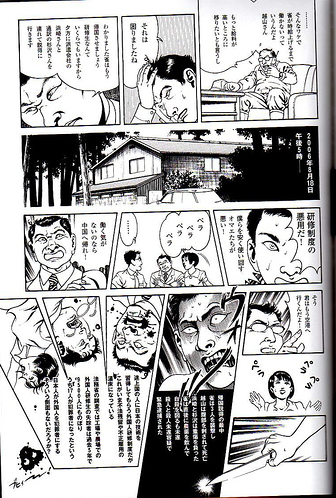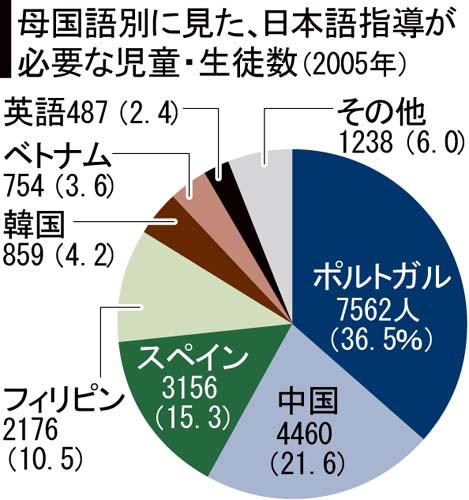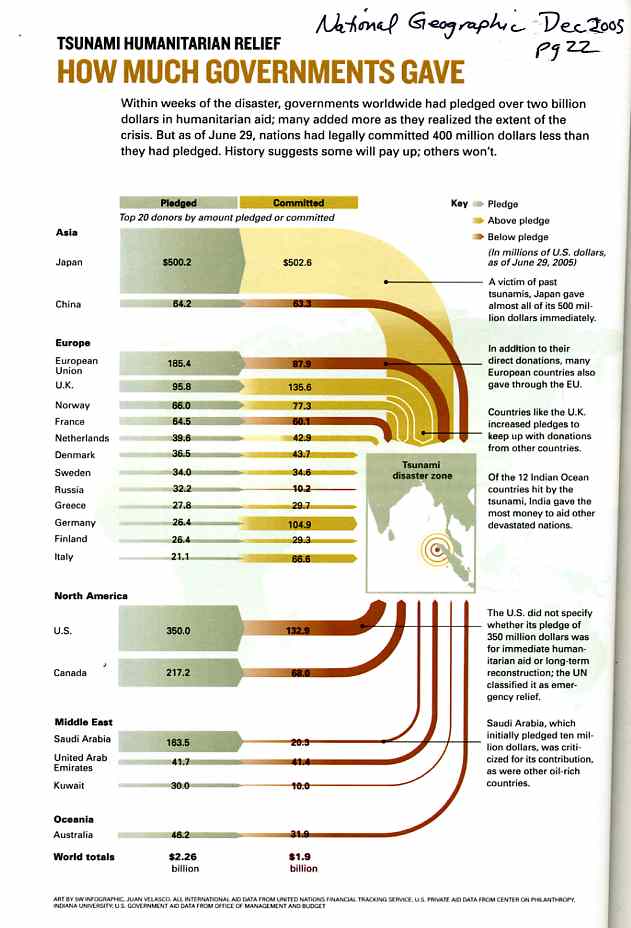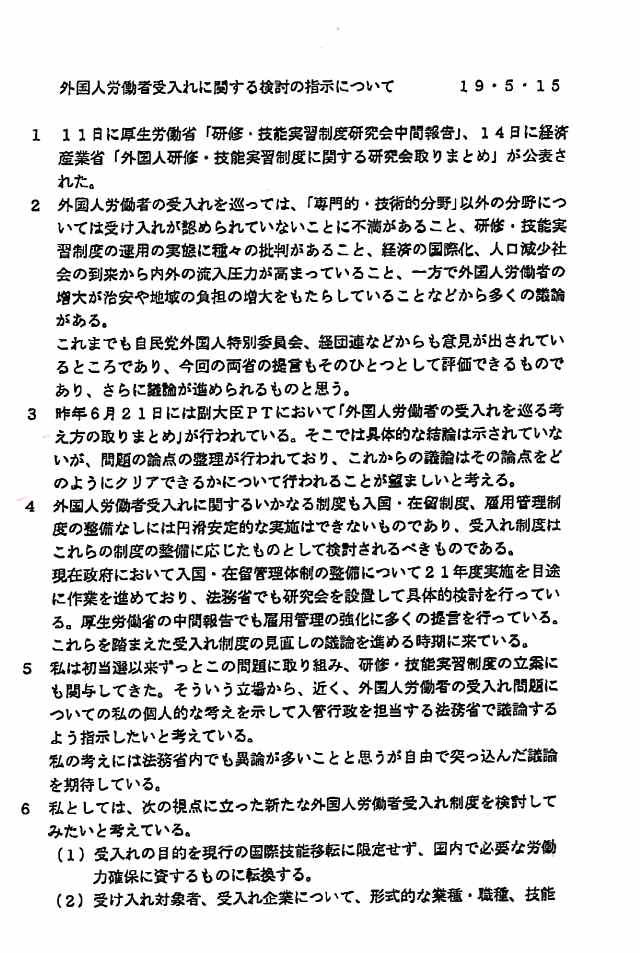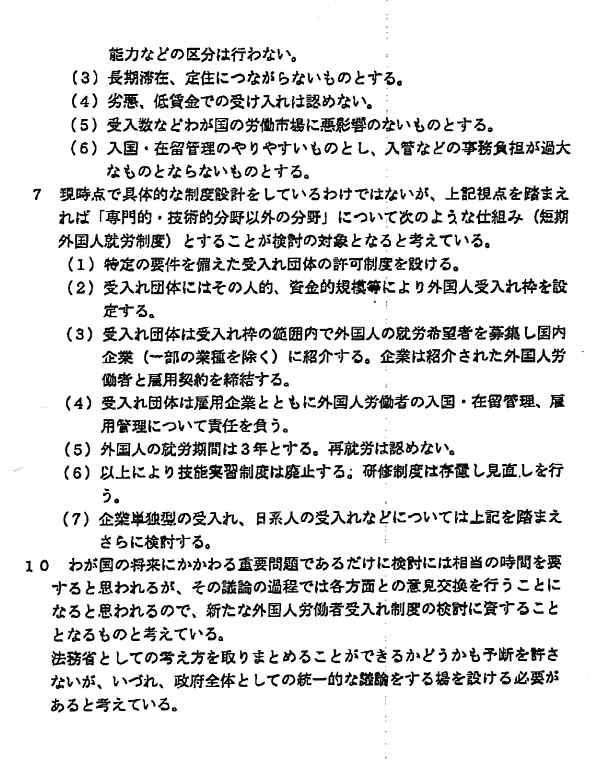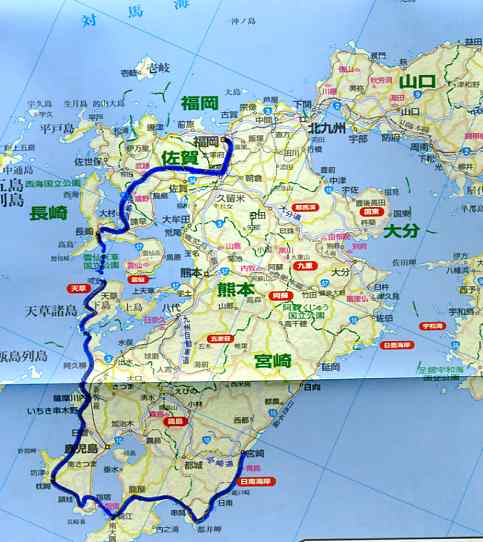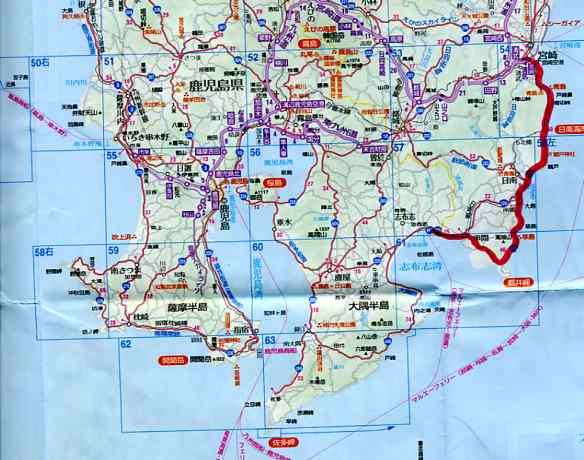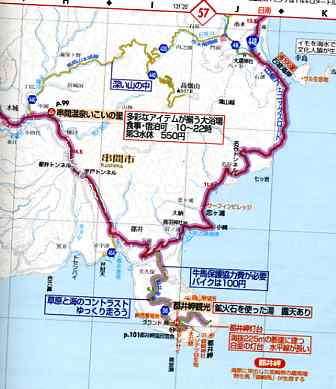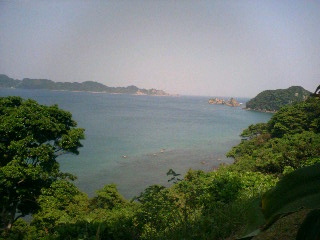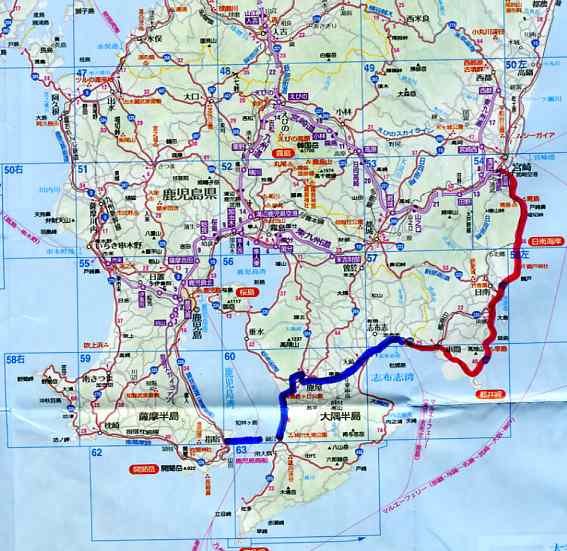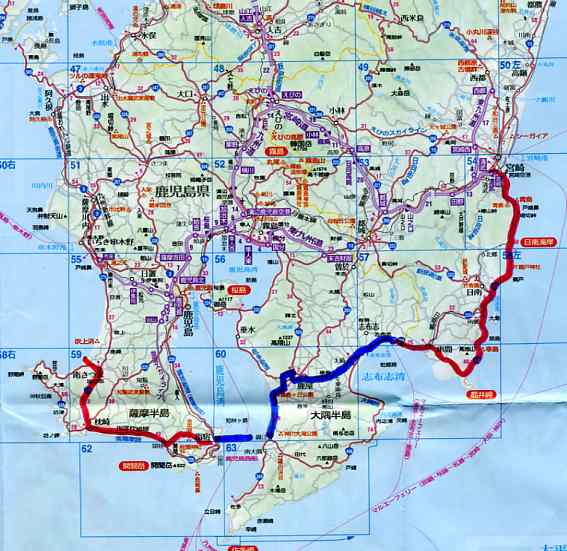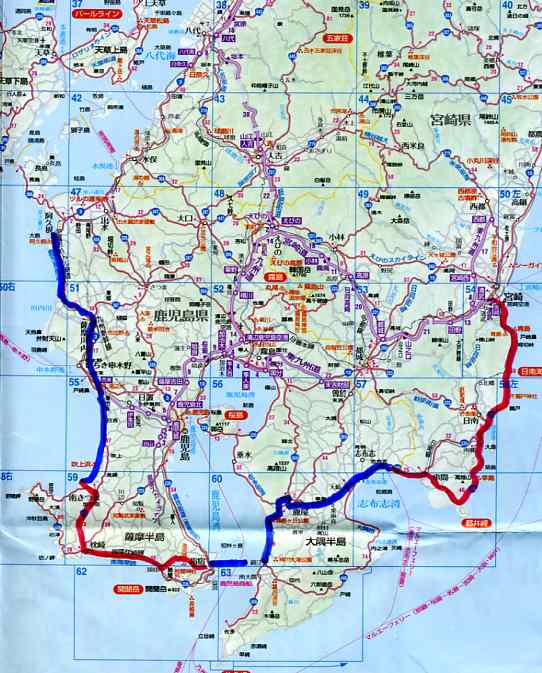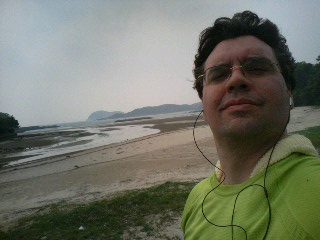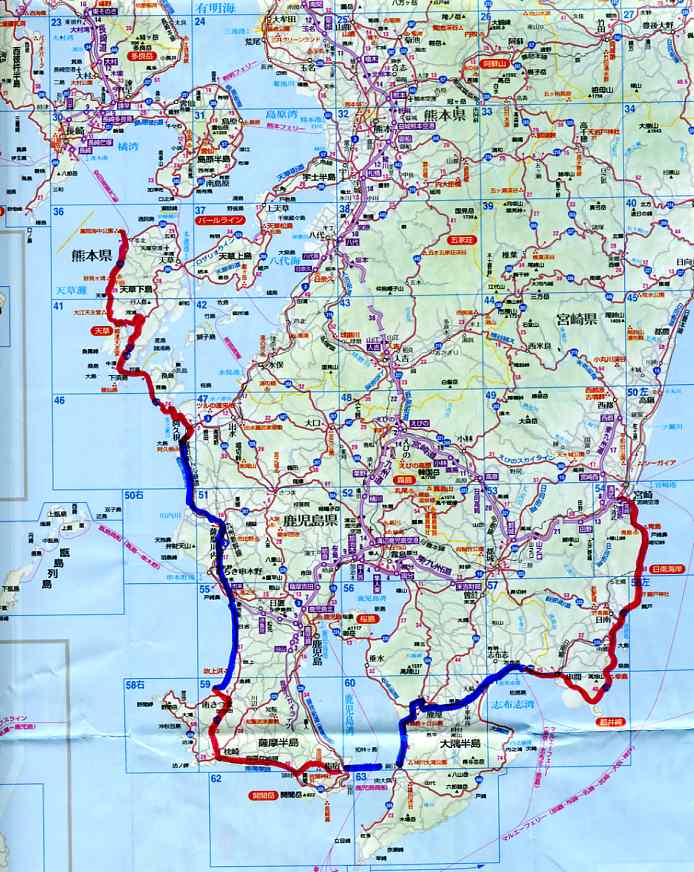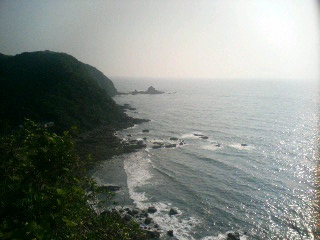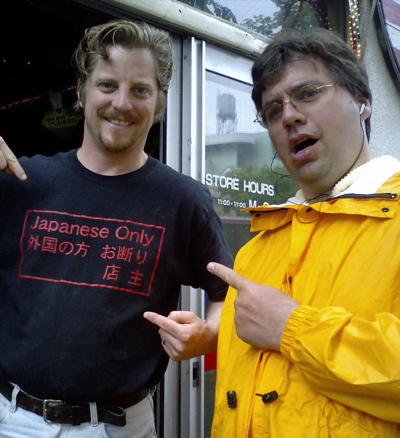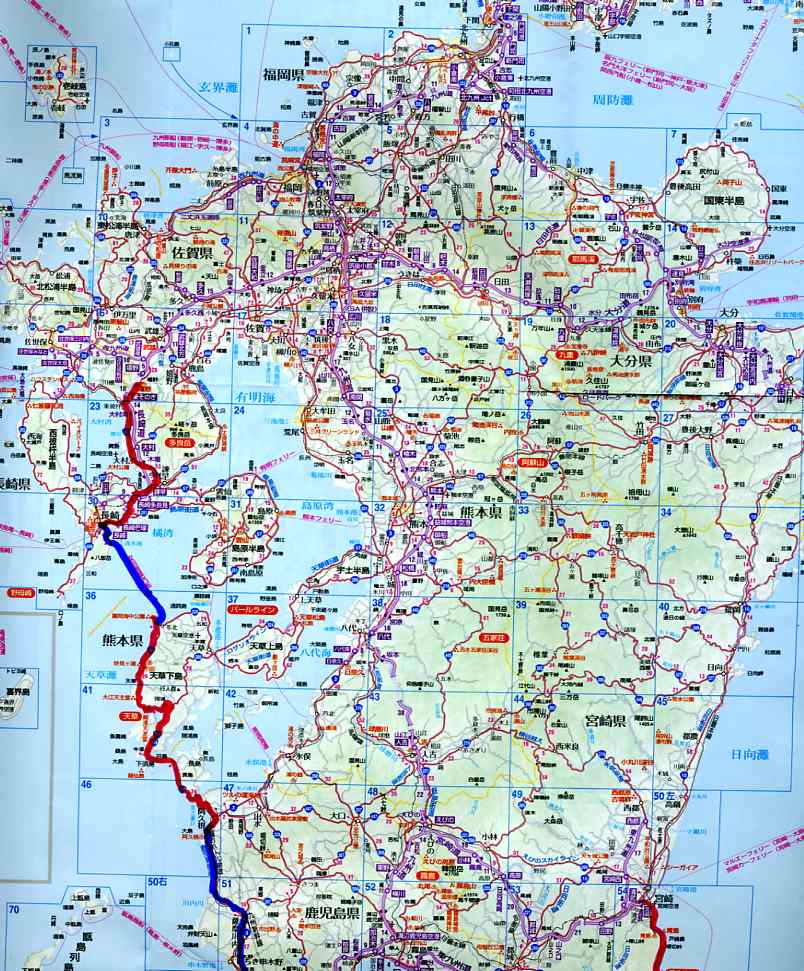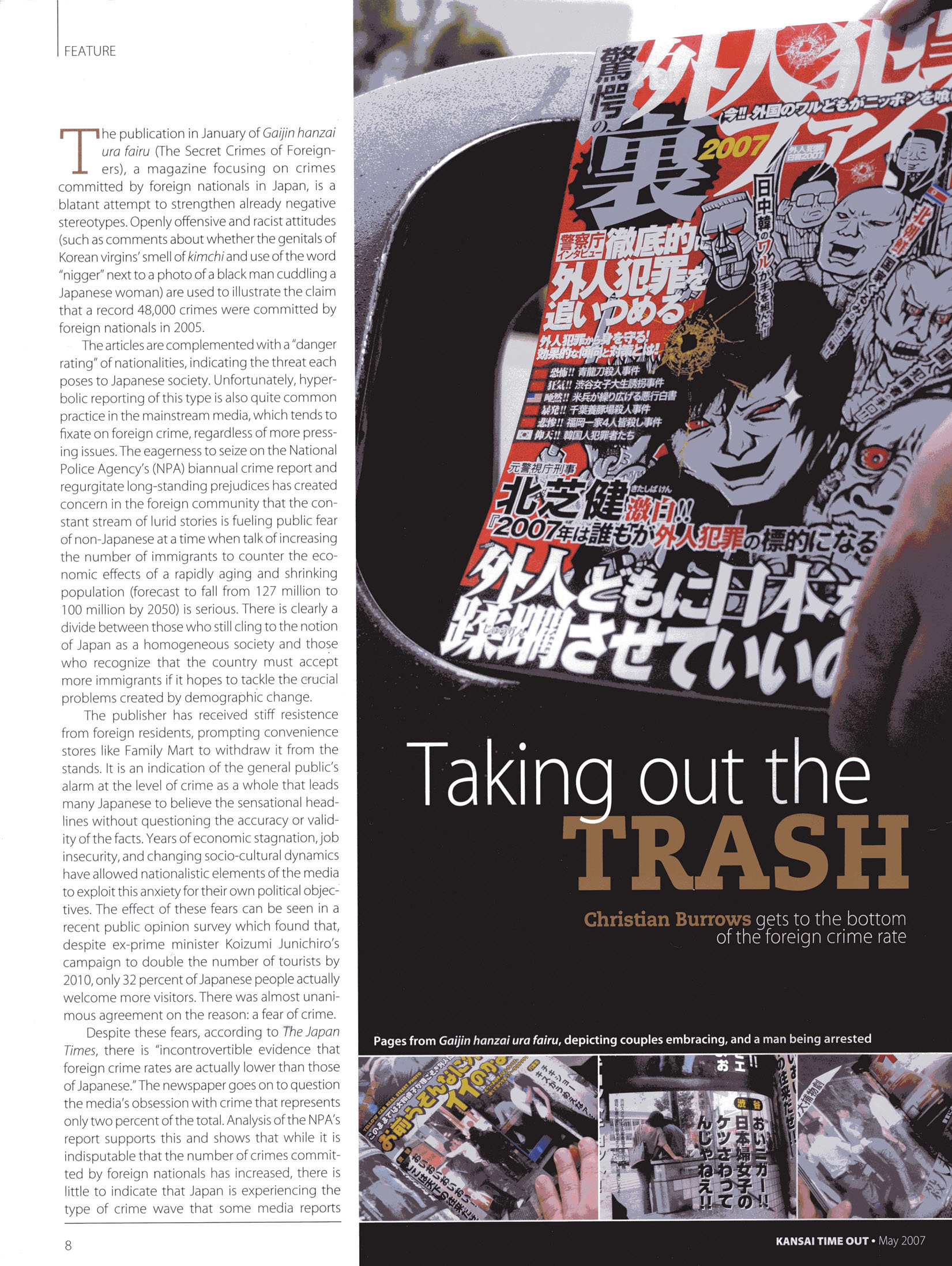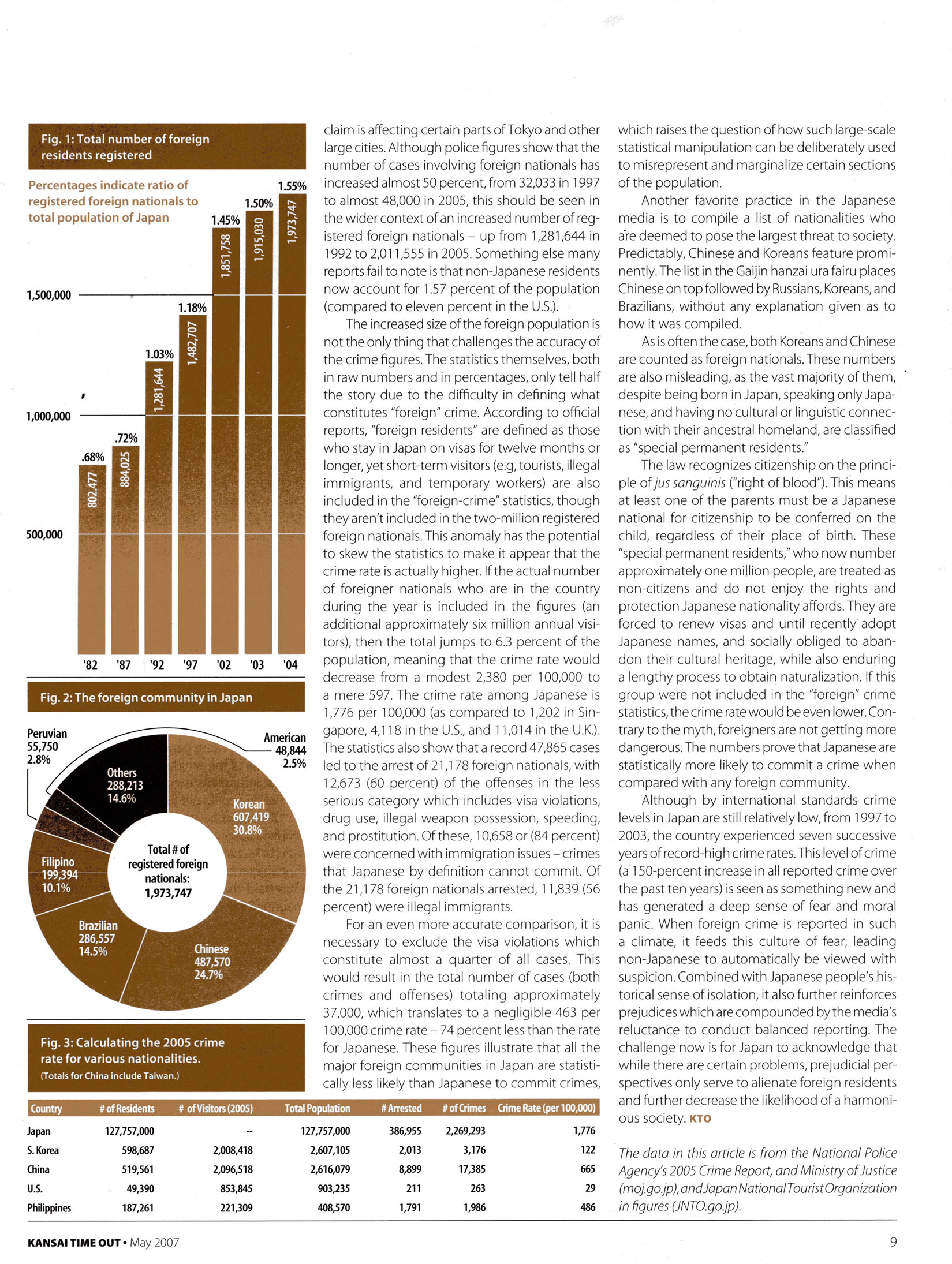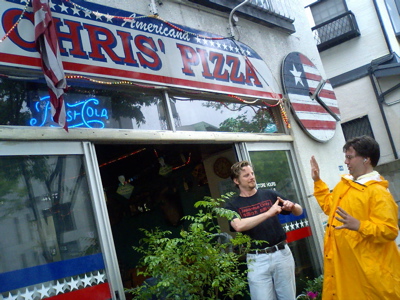mytest
Hello Blog. Contents of this week’s newsletter as follows:
///////////////////////////////////////////////////////////////
1) IPS ON JAPAN XENOPHOBIA’S EFFECT ON ECONOMIC GROWTH
2) KTO ON GAIJIN HANZAI AND SEXING UP FOREIGN CRIME FIGURES
3) NYT ON FORCED CONFESSIONS BY JAPANESE POLICE
4) LUCIE BLACKMAN’S ALLEGED KILLER ACQUITTED, ODDLY
5) ANTHONY BIANCHI REELECTED TO INUYAMA CITY ASSEMBLY
6) PEACE AS A GLOBAL LANGUAGE CONFERENCE, KYOTO, SUBMISSIONS DUE MAY 31
and finally…
7) KYUSHU CYCLETREK 2007: REPORT OF THE 768-KM TRIP WITH PHOTOS
///////////////////////////////////////////////////////////////
By Arudou Debito in Sapporo, Japan
May 13, 2007
Freely forwardable, real-time blog at https://www.debito.org/index.php
///////////////////////////////////////////////////////////////
1) IPS ON JAPAN XENOPHOBIA’S EFFECT ON ECONOMIC GROWTH
Here’s another article outlining the social damage created by Japan’s close-to-a-decade (since April 2000, see my book JAPANESE ONLY) of media, police, and governmental targeting of NJ as agents of crime and social instability:
Even when the press finally decides to turn down the heat, the public has a hard time getting over it.
=========== EXCERPT BEGINS =================
XENOPHOBIA MAY HAMPER ECONOMIC GROWTH
By Suvendrini Kakuchi
Inter Press Service News Agency, May 8, 2007
http://www.ipsnews.net/news.asp?idnews=37549
Courtesy of Hans ter Horst
TOKYO, Apr 30 (IPS) – Junko Nakayama, 56, refuses to believe that the number of foreigners arrested for crimes is decreasing as per statistics released by the National Policy Agency.
”There are an increasing number of foreigners, mostly Asian, in the area where I live and they look menacing. I am now very nervous when I walk back home from the train station in the evening,” she says.
Nakayama, who works in an international company, is not alone. Surveys indicate that more Japanese–over 70 percent in a poll–believe that the influx of foreigners into Japan is posing a threat to the country’s famed domestic peace. The notion is fuelled, say activists, by sensationalism in the media over crimes committed by overseas workers.
Accepting foreign migrant workers and treating them equally has been a long simmering debate in Japan where pride in national homogeneity is deep-rooted.
Says Nobushita Yaegashi at Kalaba No Kai, a leading grass roots group helping foreign labour: ”Despite new steps to allow foreign workers into Japan, they are viewed as cheap labour not as individuals who have the right to settle down and make a life in Japan. This policy reveals Japan’s xenophobia and is represented in the media.”
=========== EXCERPT ENDS =================
Rest at https://www.debito.org/?p=361
More on the history of the GOJ’s anti-foreign campaigns starting from:
https://www.debito.org/TheCommunity/communityissues.html#gaijinimages
https://www.debito.org/TheCommunity/communityissues.html#police
One interesting stat from the article:
—————————————————
“On average, foreigners are paid around 15,000 US dollars annually, almost half the minimum considered necessary to live in this country.”
—————————————————
That’s quite a bellwether wage differential, and would definitely like to cite that in future. I asked the reporter for her sources, and she replied that she arrived at that figure after going through the reams of news clips in the press club library, as well as talking to workers and experts.
This is an average, remember. For when you factor in the high pay that foreign diplomats, expat businessmen, foreign legal community, and financial marketers get in Japan, that means this figure should be even lower for foreign factory workers.
///////////////////////////////////////////////////////////////
2) KTO ON GAIJIN HANZAI AND SEXING UP FOREIGN CRIME FIGURES
The Kansai Time Out had a decent two-page article in their May issue on how the GOJ is misrepresenting crime statistics. Opening with the infamous GAIJIN HANZAI Magazine we talked about some months ago, it says what we’ve been saying for quite some time now; glad to see that others agree and keep passing the torch.
=========== EXCERPT BEGINS =================
The increased size of the foreign population is not the only thing that challenges the accuracy of the crime figures. The statistics themselves, both in raw numbers and in percentages, only tell half the story due to the difficulty in defining what constitutes “foreign” crime. According to official reports, “foreign residents” are defined as those who stay in Japan on visas for twelve months or longer, yet short-term visitors (e.g, tourists, illegal immigrants, and temporary workers) are also included in the “foreign crime” statistics, though they aren’t included in the two-million registered foreign nationals. This anomaly has the potential to skew the statistics to make it appear that the crime rate is actually higher. If the actual number of foreigner nationals who are in the country during the year is included in the figures (an additional approximately six million annual visitors), then the total jumps to 6.3 percent of the population, meaning that the crime rate would decrease from a modest 2380 per 100,000 to a mere 597. The crime rate among Japanese is 1776 per 100,000…
=========== EXCERPT ENDS =================
If you can tolerate run-on sentences, the rest of the article is scanned at
https://www.debito.org/?p=362
///////////////////////////////////////////////////////////////
3) NYT ON FORCED CONFESSIONS BY JAPANESE POLICE
Thanks to two friends for sending me this. Another good article from former hack and now serious journalist Norimitsu Onishi. Keep it up!
=========== EXCERPT BEGINS =================
PRESSED BY POLICE, EVEN INNOCENT CONFESS IN JAPAN
The New York Times, May 11, 2007
By NORIMITSU ONISHI
http://www.nytimes.com/2007/05/11/world/asia/11japan.html?ex=1179547200&en=a4eb5f0efa88a7a9&ei=5070&emc=eta1
SHIBUSHI, Japan The suspects in a vote-buying case in this small town in western Japan were subjected to repeated interrogations and, in several instances, months of pretrial detention. The police ordered one woman to shout her confession out a window and forced one man to stomp on the names of his loved ones.
In all, 13 men and women, ranging in age from their early 50s to mid-70s, were arrested and indicted. Six buckled and confessed to an elaborate scheme of buying votes with liquor, cash and catered parties. One man died during the trial–from the stress, the others said–and another tried to kill himself.
But all were acquitted this year in a local district court, which found that their confessions had been entirely fabricated. The presiding judge said the defendants had “made confessions in despair while going through marathon questioning.”
The Japanese authorities have long relied on confessions to take suspects to court, instead of building cases based on solid evidence. Human rights groups have criticized the practice for leading to abuses of due process and convictions of innocent people.
But in recent months developments in this case and two others have shown just how far the authorities will go in securing confessions…
=========== EXCERPT ENDS =================
Rest at https://www.debito.org/?p=367
COMMENT: Japan’s interrogation techniques of 23 days’ incarceration with marathon inquests break down plenty of innocent people, as the article demonstrates. A primer on the issue available at Debito.org artery site
https://www.debito.org/whattodoif.html#arrested
And it’s certainly an issue germane to Debito.org since Japanese police routinely engage in racial profiling and targeting foreigners (https://www.debito.org/whattodoif.html#overstay) –expressly in the name of “effective prevention of infectious diseases and terrorism” (https://www.debito.org/japantimes052405.html). It’s lucky with Japan’s extremely high conviction rates (more than 99%) that these people got off.
Speaking of people miraculously beating the rap:
///////////////////////////////////////////////////////////////
4) LUCIE BLACKMAN’S ALLEGED KILLER ACQUITTED, ODDLY
This is old news, which I didn’t get to before Golden Week, but still bears mention:
=========== EXCERPT BEGINS =================
SERIAL RAPIST OBARA GETS LIFE TERM
DEVELOPER ACQUITTED IN BLACKMAN SLAYING BUT SENT UP IN RIDGWAY’S MURDER
The Japan Times, Tuesday, April 24, 2007
http://search.japantimes.co.jp/cgi-bin/nn20070424?1.html
The Tokyo District Court acquitted wealthy property developer Joji Obara of the 2000 death and dismemberment of British bar hostess Lucie Blackman but sentenced him to life for the slaying of an Australian woman and a series of rapes nearly a decade ago.
Obara, 54, was charged with serial rape and the death of two foreign women–Blackman in 2000 in a case that became one of Japan’s most notorious sex crimes and raised concerns over the safety of women in night clubs and the sex industry here, and Australian Carita Ridgway in 1992.
Despite widely reported circumstantial evidence, Obara was cleared of all charges relating to Blackman. He was sentenced to life for nine other rapes, including the attack that led to Ridgway’s 1992 death–a case that may have gone unpunished, ironically, had Blackman’s disappearance not triggered suspicions that led to the accused…
=========== EXCERPT ENDS =================
Given that Blackman’s body was found encased in cement, close to the flat of a person with an established history of poisoning and mashing women, something doesn’t quite add up here with this court verdict. As the Japan Times pointed out in an analysis piece the same day:
=========== EXCERPT BEGINS =================
APPROACH TO BLACKMAN SLAYING HIT, LIKENED TO KEYSTONE COPS
FAULTY POLICE PROCEDURES SEEN FOILING QUICK ACTION, PREVENTION
The Japan Times, Tuesday, April 24, 2007
http://search.japantimes.co.jp/cgi-bin/nn20070424f1.html
By JUN HONGO AND ERIC PRIDEAUX
…Blackman’s dismembered body was discovered in a cave on Kanagawa Prefecture’s Miura Peninsula in February 2001, about 200 meters from one of Obara’s many summer getaway homes.
Yet Obara has said prosecutors lack sufficient evidence to hold him responsible for Blackman’s death, the dismemberment of her body or any of the other charges…
[F]ive days after Blackman was last heard from, on July 6, 2000, police received a call from the manager of Obara’s condominium on the shores of the Miura Peninsula and were told of a tenant who had been making lots of noise in his unit the day before.
Prosecutors say police visited the apartment that evening and found Obara naked from the waist up, covered in sweat. Officers asked permission to look around his apartment and were allowed in. Chunks of cement were strewn near the entrance and around the apartment. Asked about this, Obara said he had been “removing tiles,” according to a trial transcript.
When officers requested access to the bathroom, Obara said, “You’ve already seen enough.” Upon further questioning, he grew agitated and the officers eventually left.
Besides the concrete debris, officers also glimpsed a bulky sack in the room and what appeared to be a gardening hoe…
The way police handled the Blackman and Ridgway deaths appear remarkably similar to that of Lindsay Ann Hawker, a 22-year-old Briton found slain last month.
The suspect in that murder, Tatsuya Ichihashi, 28, gave several officers the slip at his Chiba Prefecture apartment, where Hawker’s strangled corpse was found in a disconnected tub full of sand on his balcony.
He had allegedly been stalking Hawker, an English teacher at a Nova school, and she had agreed to go to his apartment to give him a private lesson.
Although police claim their team was properly positioned when they went to question Ichihashi on Hawker’s disappearance on March 26, he managed to bolt down a fire escape and remains at large.
=========== EXCERPT ENDS =================
Rest at https://www.debito.org/?p=356
Funny thing about all this is, Japan has many famous “enzai” (framing) cases, where the police try very hard to make the case that someone is guilty, even with only circumstantial evidence.
One example here, the Eniwa Enzai Jiken:
http://www4.ocn.ne.jp/~sien/
http://stone2.at.infoseek.co.jp/eniwa.html
Other enzai cases here:
http://www.sayama-case.com/ring/ring.cgi
(Articles in Japanese)
And a brief on the case (old, no newer article found on JT site) here:
MURDER ARREST LOOMS
The Japan Times, May 23, 2000 (page down past first article)
http://search.japantimes.co.jp/cgi-bin/nn20000523a5.html
which ended with a conviction on circumstantial evidence.
Why do the Japanese police seem to have such a hard time dealing with crime committed against non-Japanese, yet have very little compunction about treating NJ as criminals themselves…? Building a case…
Now it’s time for some good news:
///////////////////////////////////////////////////////////////
5) ANTHONY BIANCHI REELECTED TO INUYAMA CITY ASSEMBLY
Naturalized citizen gets a second lease on his public career:
============================
US-BORN BIANCHI REELECTED IN AICHI
Japan Today, Monday, April 23, 2007 at 06:56 EDT
http://www.japantoday.com/jp/news/404663
Courtesy of Ben at The Community
NAGOYA Anthony Bianchi, originally from Brooklyn, New York, was reelected Sunday as an assembly member in Inuyama, Aichi Prefecture.
Bianchi, 48, had resigned as an assembly member to run in the city’s mayoral election in December. After losing the mayoral bid, he ran again for an assembly seat in the city, which has a population of around 75,000.
Bianchi first came to Japan in the late 1980s and became a naturalized Japanese citizen in 2002. After working as an English teacher in Inuyama, he won a seat in the city assembly in April 2003 with the largest number of votes ever cast for a candidate in the election of 3,302. (Kyodo News)
ENDS
============================
More on Anthony here:
http://www.japanprobe.com/?p=766
http://www.npr.org/templates/story/story.php?storyId=1248301
http://www.wnyc.org/shows/bl/episodes/2003/08/01
Anthony’s official website here:
http://www.bianchi-inuyama.com/
Congratulations!
///////////////////////////////////////////////////////////////
6) PEACE AS A GLOBAL LANGUAGE CONFERENCE, KYOTO, SUBMISSIONS DUE MAY 31
Friend Albie Sharpe asked me to pass this along:
===============================
Call for Presentations
6th Annual Peace as a Global Language Conference
Cultivating Peace, in association with a Model United Nations ‘Imagine Peace’
Date: Saturday, October 27 – Sunday October 28.
Venue: Kyoto University of Foreign Studies.
Submissions related to education and research in the following areas are invited:
– peace, the environment, human rights and other global issues,
– intercultural communication, values, health, gender and media literacy,
– foreign language education focusing on global issues.
Presentations may be in English or Japanese, or bilingual. Presenters may be teachers, students, researchers, journalists, activists and others interested in education for a better world.
Submissions should be sent by e-mail to: submissions@pgljapan.org
Deadline for Submissions: May 31, 2007
Further information http://www.pgljapan.org
===============================
I submitted a proposal for four different talks. We’ll just let them choose which one (or two, perhaps) they want.
///////////////////////////////////////////////////////////////
and finally…
7) KYUSHU CYCLETREK 2007: REPORT OF THE 768-KM TRIP WITH PHOTOS
=========== EXCERPT BEGINS =================
This is not the first time I’ve done something like this. I’ve undertaken a number of cycletreks (see one of my favorite essays at https://www.debito.org/residentspage.html#cycletreks), the last one last summer where a friend and I cycled from Sapporo to Abashiri via Wakkanai and Monbetsu (total for me, 940 kms over nearly two weeks).
But cycling can be addictive, so long as you can take a bicycle seat numbing your tuckus all day, since it ultimately becomes meditation with a view. And by the end of around the third day, when your body has become accustomed to exhausted early nights crashing in a tent, followed by amazingly-full raring-to-go recovery by sunrise, you get into a rhythm and a self-actualizing sense of accomplishment:
You have fuel, functional legs, full tyres, and a flat surface to cycle upon. You feel as if can go anywhere, do anything. All that stands between you and your destination is time–since distance (when you go at least 100 kms a day) becomes surmountable.
Here’s where my legs took me this Golden Week in Southern Kyushu…
=========== EXCERPT ENDS =================
Rest of the report, with scans of maps and photos of scenery and me en route at
https://www.debito.org/?p=368
Should be a pleasant diversion from Debito.org’s usual fare.
///////////////////////////////////////////////////////////////
Thanks for reading!
Arudou Debito in Sapporo, Japan
debito@debito.org
https://www.debito.org
DEBITO.ORG NEWSLETTER MAY 13, 2007 ENDS
